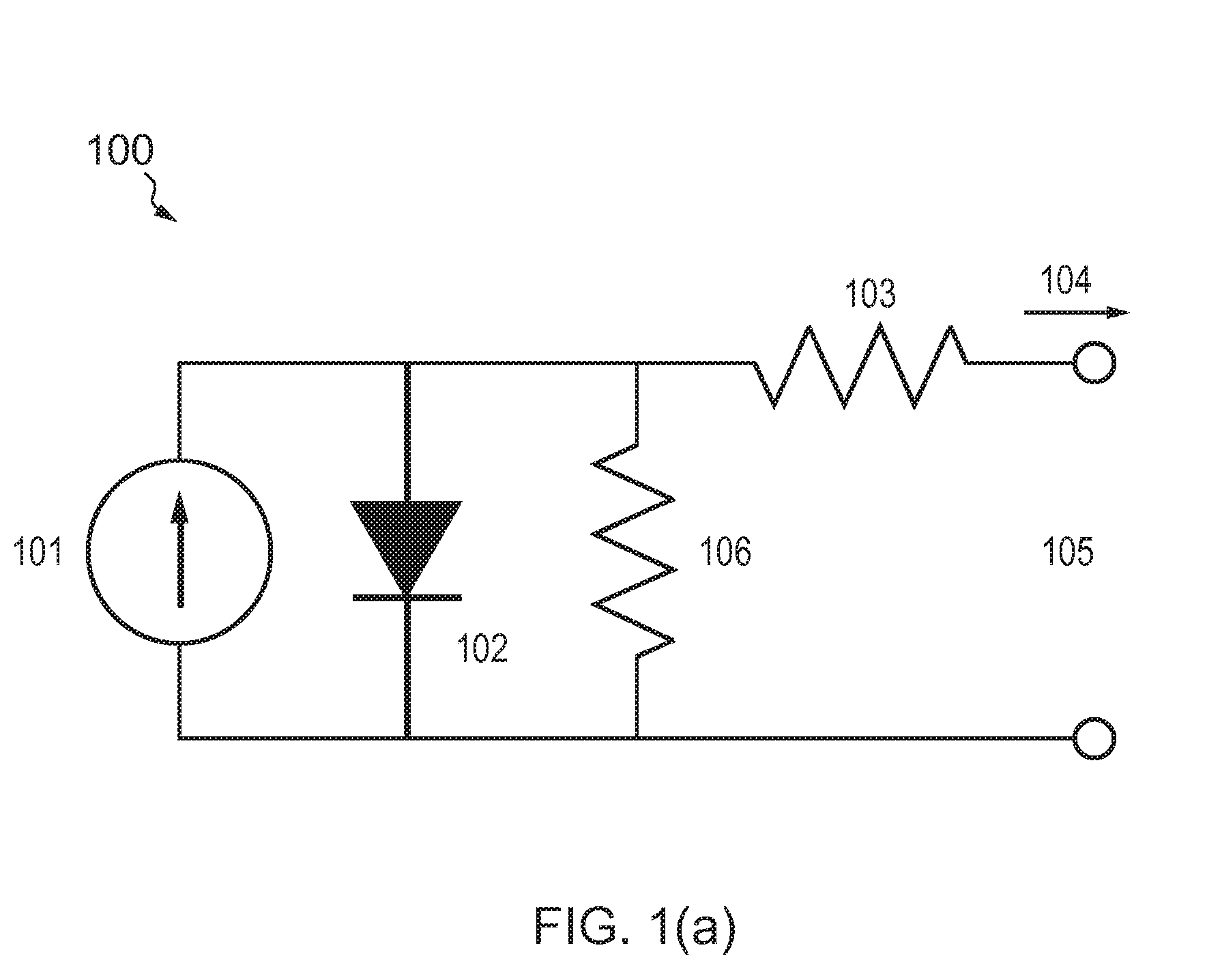Photovoltaic units, methods of operating photovoltaic units and controllers therefor
a photovoltaic unit and photovoltaic technology, applied in the field of photovoltaic units, can solve the problems of large drop in the output power of the pv system in question, significant drop in the efficiency of the photovoltaic system as a whole, and differences between output powers of individual solar cells in the various modules, and achieve the effect of substantial cost savings
- Summary
- Abstract
- Description
- Claims
- Application Information
AI Technical Summary
Benefits of technology
Problems solved by technology
Method used
Image
Examples
Embodiment Construction
[0062]A conventional arrangement for a PV system is shown in FIG. 4. A solar module 400 consists of perhaps 54-72 cells 100 in series, typically arranged in a meander-type fashion with a width 402 of 9-12 cells and one bypass diode 401 per segment of 18-24 cells. The number of cells per bypass diode is typically coupled to the breakdown voltage of the solar cells used. A segment 403 comprising one series of solar cells and a bypass diode 401 is indicated as well. The 3 diodes in FIG. 4 are typically placed in a junction box 404 with a heat sink that is placed on the backside of each module.
[0063]Conventional modules exhibit a signficant decrease in output power due to sub-optimum performance of one or more PV solar cells present, e.g. due to shading, breakage, electrical disconnects, etc . In order to understand why e.g. shading of even a single or a few cells may lead to a relatively large decrease in output power of a PV system, consider a fragment of a module—also described herei...
PUM
 Login to View More
Login to View More Abstract
Description
Claims
Application Information
 Login to View More
Login to View More - R&D
- Intellectual Property
- Life Sciences
- Materials
- Tech Scout
- Unparalleled Data Quality
- Higher Quality Content
- 60% Fewer Hallucinations
Browse by: Latest US Patents, China's latest patents, Technical Efficacy Thesaurus, Application Domain, Technology Topic, Popular Technical Reports.
© 2025 PatSnap. All rights reserved.Legal|Privacy policy|Modern Slavery Act Transparency Statement|Sitemap|About US| Contact US: help@patsnap.com



